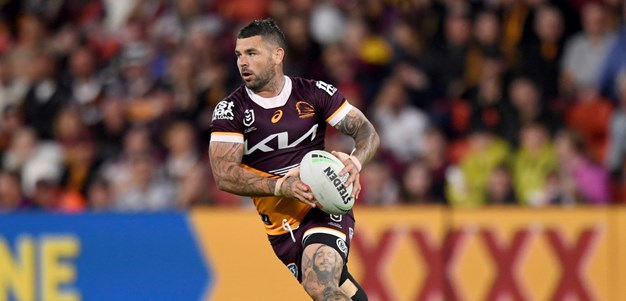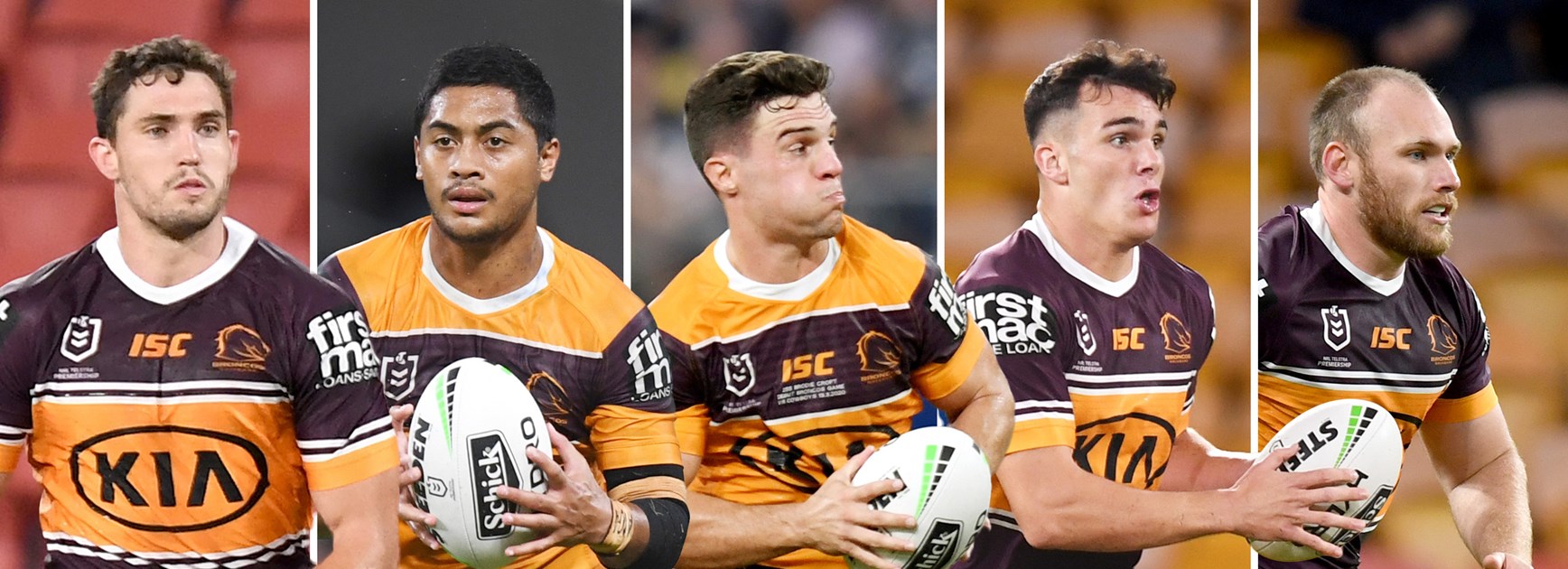
Countless words have been written on what has gone wrong for Brisbane behind the scenes in 2020 but there is one key number which underlines their dramatic decline.
With coach Anthony Seibold now officially gone, NRL.com Stats has crunched the numbers on the descent in the club's on-field output this year.
Dramatic finals exit notwithstanding, the Broncos did reasonably well on field in 2019 but it's hard to find any positives in the numbers behind their dire 2020 campaign.
Among other key areas, their drop-off in run metres has been at the heart of their woeful 2020 record in which they have slumped to 15th spot with a 3-12 record, staring down the barrel of the ignominious outcome of collecting the club's first wooden spoon since the hugely successful club was founded in 1988.
In a season when nearly all clubs have increased their run metres, Brisbane's average has dropped 133 metres per game as they've failed to get the ball down-field into attacking positions.
From Redfern to Red Hill: Why Seibold's methods failed in Brisbane
Drop-off in run metres underscores huge slump
Run metres have increased across the board in the Telstra Premiership in 2020 with increased ball-in-play time and the six-again rule speeding up play, with 12 of 16 clubs increasing their average run metres gained per game – some dramatically.
Three clubs (Manly, Gold Coast and Canterbury) are making fractionally fewer metres per game but Brisbane have dropped by a whopping 133 metres per match.
The best metres per game last year was Melbourne's 1667 and the worst was Newcastle's 1498.
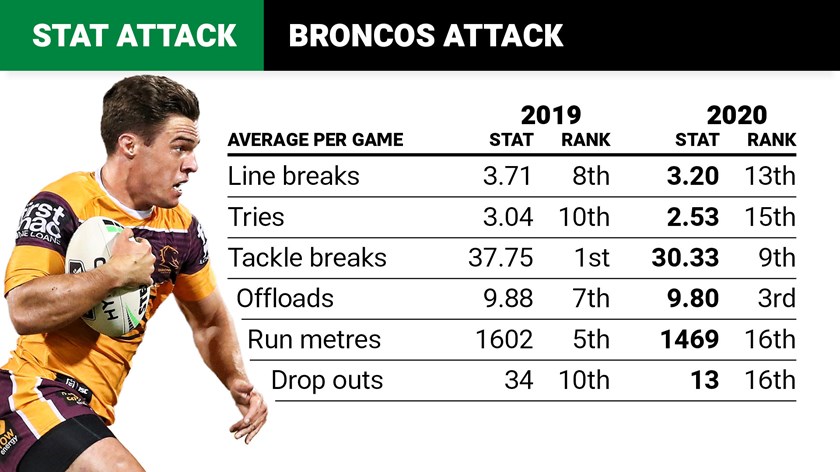
Nine clubs are making more metres this year than the Storm did last year, headed by Parramatta (1892 per game).
Brisbane haven't only gone backwards, they are making fewer metres in 2020 than any club did in 2019, with a paltry 1469 metres per match giving them almost no chance to compete.
Other stats going backwards
Other than the alarming drop-off in metres gained, the Broncos have dropped from the best tackle-busting club in 2019 to ninth. They were only the 10th-best club at forcing line drop-outs last season but have been the worst team in 2020.
The team's one-on-one tackling overall hasn't changed much with their effective tackle percentage, total tackles made and missed tackles steady if not slightly improved on 2019.
However, major defensive misses and misreads leading to line breaks and tries has jumped significantly, going from ninth best for line break causes to 16th and 11th best for try causes also dropping to last in the league.
The team's completion rate has dropped compared to other clubs, going from fifth-best to 14th, and in a season where there are fewer penalties overall due to the six-again rule, the club has gone from the sixth best-behaved club to the worst of 16.
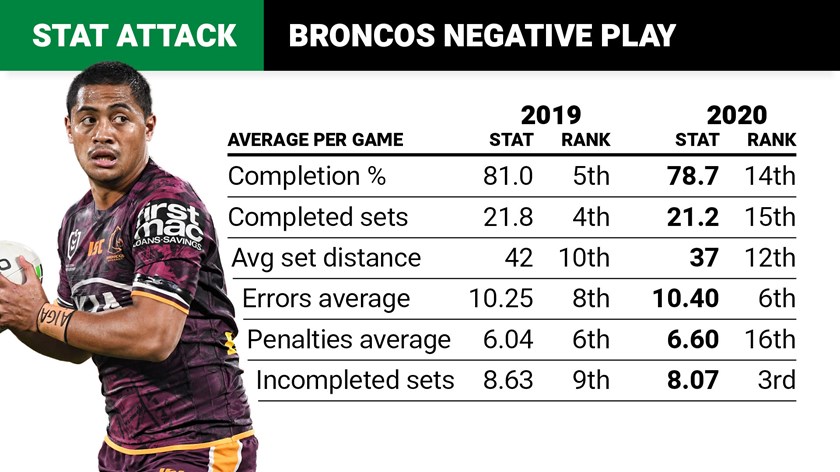
Run metres by player
Some of Brisbane's key metre-eaters have had drastically reduced output this year, with injury a big factor.
They have certainly missed Matt Lodge's output; he averaged 157 metres in 21 games last year but has been restricted by injury this year, averaging 107 in six games.
Anthony Milford's running game has also dropped off, though he too has been limited by injury. He averaged 103 metres in 23 games in 2019 but just 71 in 13 games this year.
Corey Oates produced 148 metres per game in 21 games in 2019 but just 89 across 10 games in 2020 and Joe Ofehangaue's 120 per game in 19 games has dropped to 80 in his 11 games.
However, Pat Carrigan has lifted his output from 84 metres per game last year to 156, with a big increase in minutes and responsibility. Maligned veteran fullback Darius Boyd has averaged in the 80s both seasons, with similar output in terms of try and line break assists. Payne Haas is also similar (down slightly from 189 to 180).
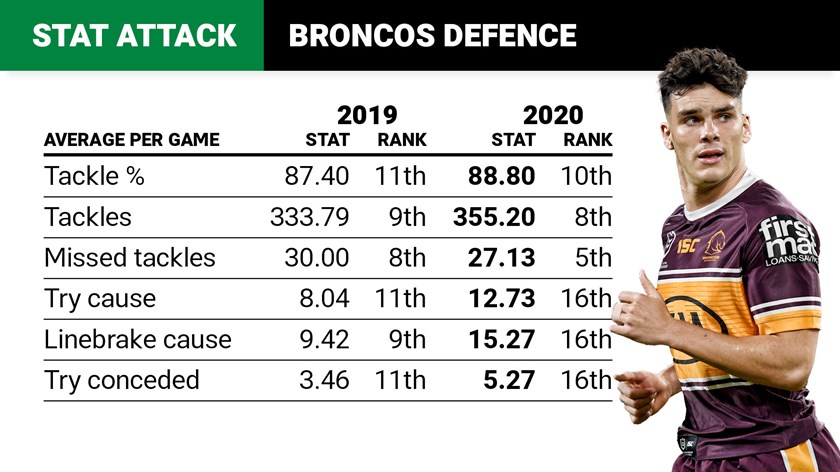
Try causes and line-break causes
Brisbane's defence has been as big of an issue as their struggles to make metres or score points.
NRL.com Stats attributes a "try cause" to any player who, on a try-scoring play, had a chance to prevent a try being scored and did not. Similarly, a "break cause" is attributed to any player complicit in an opposition line break.
The main break cause contributors for the Broncos in 2020 have been Herbie Farnworth (22 in 14 games), Brodie Croft (20 in 13), Anthony Milford (17 in 13), Xavier Coates (15 in nine), Darius Boyd (15 in 15), Jesse Arthars (15 in five), Payne Haas (11 in 14), Richie Kennar (10 in five) and Joe Ofahengaue (10 in 11).
No other club has 10 players with double-digit break causes (the Sharks and Cowboys are next worst with nine each). Only Waqa Blake (25) has more break causes than Farnworth, while North Queensland winger Kyle Feldt and Parramatta veteran Blake Ferguson are in equal second with Farnworth on 22 each.
In 2019 Brisbane had no players - who had played more than five games - contributing more than one break cause per game, but this year there are six.
It took Milford 23 games to reach 19 break causes last year, Boyd 24 games to reach 14, and Haas 20 games to reach eight. Farnworth had two in two and Coates six in three. Croft had 18 in 22 games at Melbourne to be their second-worst offender after Suliasi Vunivalu (24 in 22 games).
In terms of try causes, Croft (19 in 13 games) is the biggest contributor; only Kyle Feldt (22) and Reuben Garrick (20) have more this year.
Boyd (17 in 15 games), Farnworth (16 in 14), Milford (15 in 13), Staggs (13 in nine), Coates (12 in nine), Arthars (10 in five) and Tesi Niu (10 in six) have all hit double figures at a rate of more than one per game.


